Skip to main content
Jefferson David Chalfant
1856–1931
BirthplaceLancaster, Pennsylvania, United States of America
Death placeWilmington, Delaware, United States of America
BiographyJefferson David Chalfant painted still-life images and scenes of everyday life that celebrate the ideal of manual craft in their subjects and in their technique. Chalfant was born in Chester County, Pennsylvania, the son of a cabinetmaker. He followed his father’s trade and worked with him decorating railroad cars. In 1879 he moved to Wilmington, Delaware, where he established himself as a fine artist. Chalfant devoted a decade to painting landscapes and still-life images. He specialized in the still-life type known as trompe-l’oeil (French for “fool the eye”), in which realistically painted objects seem to project into the viewer’s space from the flat painted surface on which they are illusionistically arranged. With its roots in seventeenth-century Dutch art, trompe-l’oeil painting enjoyed a strong resurgence in the United States at the end of the nineteenth century. Chalfant borrowed several of his themes and arrangements from one of its most popular practitioners, William Michael Harnett (1848–92), whose works he knew through reproductive prints. Chalfant’s still-life paintings, characterized by silvery tonalities, intricate details, subtle patterns, and understated humor, are considered among the finest of the type. Because of his painstaking technique, the artist’s output was low.
In 1890, Chalfont went to Paris for two years with the support of a local patron. The artist enrolled at the Académie Julian, a favorite school among American art students, where the pedagogy emphasized careful delineation of the human figure. On his return to Wilmington, Chalfont turned to the painting of genre scenes, or scenes of everyday life, in which he emphasized extremes of youth and age. Several feature African American youth and, like his still-life paintings, music and musical instruments. Trained as a craftsman himself, Chalfont was preoccupied more generally with the theme of traditional artisanship and the dignity of skilled manual labor. He portrayed crafts workers, often elderly, in their customary settings in highly detailed paintings that expressed contemporary anxiety about the encroachment of industrialization and urbanization on time-honored ways of life. Chalfant’s nostalgia did not extend beyond his paintings, however; in the 1890s he tried his hand at various labor-saving mechanical inventions, notably a type-justifying machine.
After the turn of the twentieth century, with the sponsorship of Delaware Senator Willard Saulsbury and his wife, Chalfant undertook commissioned likenesses among Wilmington’s important families; he generally worked from photographs, and he used earlier images to portray historical individuals. Painted in a style associated with an earlier era, Chalfant’s portraits never achieved the success of his still lifes and genre scenes. The artist is said to have produced more than one hundred such portraits between 1905 and 1927, when a stroke forced him to abandon painting.
In 1890, Chalfont went to Paris for two years with the support of a local patron. The artist enrolled at the Académie Julian, a favorite school among American art students, where the pedagogy emphasized careful delineation of the human figure. On his return to Wilmington, Chalfont turned to the painting of genre scenes, or scenes of everyday life, in which he emphasized extremes of youth and age. Several feature African American youth and, like his still-life paintings, music and musical instruments. Trained as a craftsman himself, Chalfont was preoccupied more generally with the theme of traditional artisanship and the dignity of skilled manual labor. He portrayed crafts workers, often elderly, in their customary settings in highly detailed paintings that expressed contemporary anxiety about the encroachment of industrialization and urbanization on time-honored ways of life. Chalfant’s nostalgia did not extend beyond his paintings, however; in the 1890s he tried his hand at various labor-saving mechanical inventions, notably a type-justifying machine.
After the turn of the twentieth century, with the sponsorship of Delaware Senator Willard Saulsbury and his wife, Chalfant undertook commissioned likenesses among Wilmington’s important families; he generally worked from photographs, and he used earlier images to portray historical individuals. Painted in a style associated with an earlier era, Chalfant’s portraits never achieved the success of his still lifes and genre scenes. The artist is said to have produced more than one hundred such portraits between 1905 and 1927, when a stroke forced him to abandon painting.

